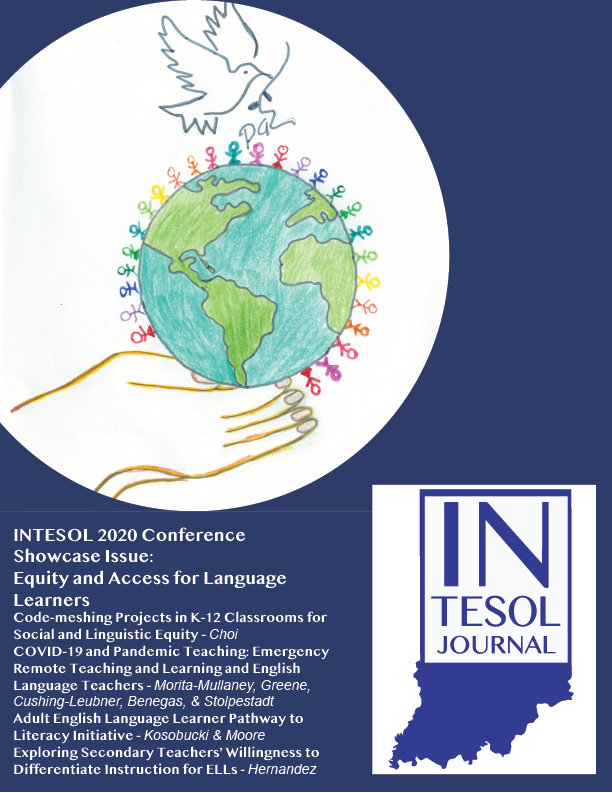Code-meshing Projects in K-12 Classrooms for Social and Linguistic Equity
DOI:
https://doi.org/10.18060/25086Keywords:
code-meshing, translingual approach, translingual pedagogy, multilingual students, K-12 English writingAbstract
To contest monolingualism, which oppresses language diversity in U.S. classrooms, Horner et al. (2011) called for a translingual approach to language differences. As much of the literature on translingualism has remained at a theoretical level, writing teachers have been seeking to enact this disposition in their classrooms pedagogically. As a response to this, code-meshing (Young, 2004, 2013; Canagarajah, 2006, 2011) can be used as a pedagogical application of the translingual approach. This paper conceptualizes code-meshing as translingual pedagogy and explores how it can be used in K-12 contexts by examining documented K-12 classroom examples of code-meshing projects in the studies of Zapata and Laman (2016) and Pacheco et al. (2017). Despite the concerns that critics have voiced, the examples show that code-meshing can be used as an effective pedagogical tool for developing the translingual disposition, supporting students’ multilingual identity, and discussing social and linguistic equity in K-12 settings. While the structural limitations for translingual pedagogy are not unforeseen, teachers and researchers should be encouraged to collaborate and keep developing translingual pedagogy for linguistic and social equity.
Downloads
Published
Issue
Section
License
Copyright (c) 2021 Woongsik Choi

This work is licensed under a Creative Commons Attribution-NonCommercial 4.0 International License.


